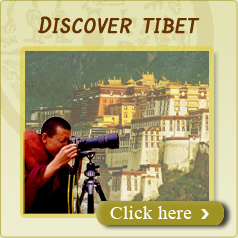Sera Monastery

At the foot of the Wuze Hill in Sera to the north of Lhasa, the Sera Monastery is one of the three great monasteries in Lhasa and one of the six great monasteries of the Gelug Sect of Buddhism in Tibet. It was built by one of disciples of Zonggaba in 1419. On 27th of the 12th month of the Tibetan calendar, the monastery holds the grand Sera Bungchen Festival, which attracts flocks of Buddhists and others.
Sera is famous for its "Buddhism Scriptures Debating": monks can be seen preparing for monastic exam by staging mock debates in the ritual way.
Some sit cross-legged under the trees, while others run from group to group giving vigorous hand-claps to end a statement or make a point. Master and dignitaries sit on the raised tiers when a real exam takes place.
Sera in Tibetan means Wild Rose Garden since opulent wild rose woods once grew around it. A legend said Tsong Khapa and his two disciples once proceeded religious cultivation around. One day, they heard horse whinnying underground when they were taking a walk in the rose woods. A statue of Hynagriva (a horse-headed demon-god) was dug out then. Tsong Khapa started to build the monastery to enshrine Hynagriva. However, the truth is that in 1414, Jamchen Chojey (or Sakya Yeshe), one of Tsong Khapa's disciples, on behalf of Tsong Khapa, visited Emperor Chengzu, who granted him a title of Dharma King of Great Mercy as well as sutras and a set of sandalwood Arhats. In order to preserve them, Tsong Khapa suggested Jamchen Chojey to build a monastery to house these treasures. Then Sera monastery was set up in 1419.



